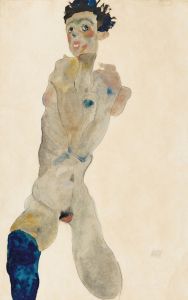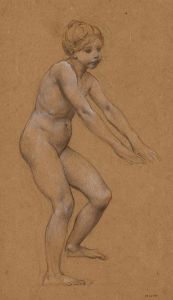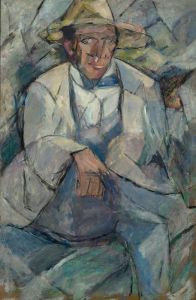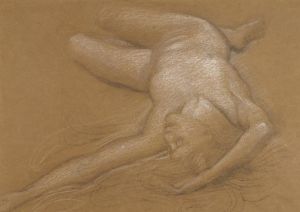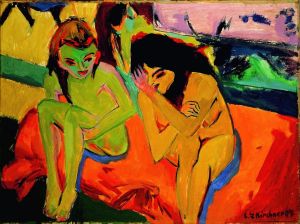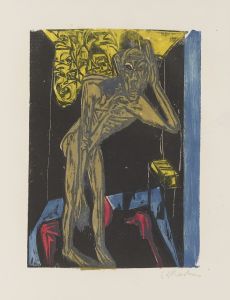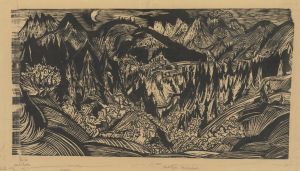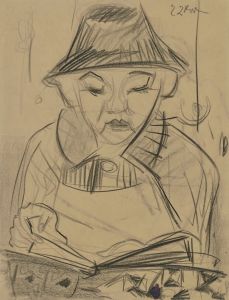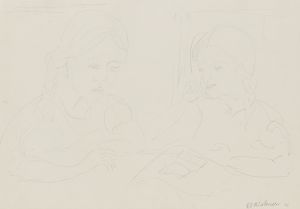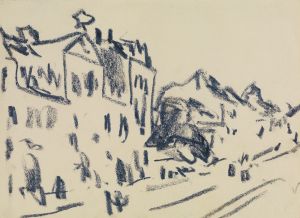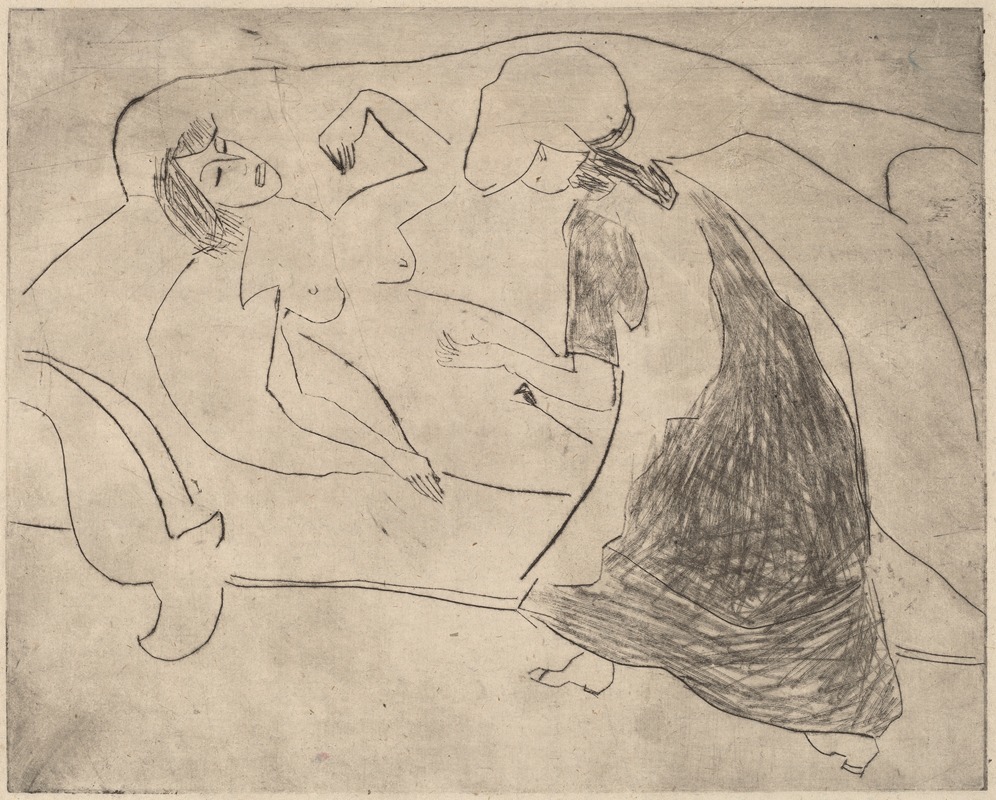
Girl, with Another Rubbing Her Belly
A hand-painted replica of Ernst Ludwig Kirchner’s masterpiece Girl, with Another Rubbing Her Belly, meticulously crafted by professional artists to capture the true essence of the original. Each piece is created with museum-quality canvas and rare mineral pigments, carefully painted by experienced artists with delicate brushstrokes and rich, layered colors to perfectly recreate the texture of the original artwork. Unlike machine-printed reproductions, this hand-painted version brings the painting to life, infused with the artist’s emotions and skill in every stroke. Whether for personal collection or home decoration, it instantly elevates the artistic atmosphere of any space.
Ernst Ludwig Kirchner was a prominent German expressionist painter and one of the founding members of the artist group Die Brücke (The Bridge), which played a pivotal role in the development of modern art in the early 20th century. Kirchner's work is characterized by its bold use of color, dynamic compositions, and emotive subject matter, often reflecting the tensions and anxieties of the modern world.
"Girl, with Another Rubbing Her Belly" is one of Kirchner's lesser-known works, and there is limited information available about this specific painting. Kirchner's oeuvre often explored themes of human interaction, urban life, and the human form, frequently depicting figures in intimate or dynamic poses. His style is marked by a distinctive use of elongated forms and vibrant, sometimes jarring color contrasts, which can be seen as a response to the rapid changes and industrialization of the early 20th century.
Kirchner's work was heavily influenced by non-European art forms, particularly African and Oceanic art, which he and his contemporaries viewed as more "primitive" and authentic compared to the academic traditions of Europe. This influence is evident in his approach to the human figure, which often emphasizes raw emotion and physicality over realistic representation.
The painting "Girl, with Another Rubbing Her Belly" likely fits within Kirchner's broader exploration of the human figure and interpersonal relationships. His works often depicted scenes of everyday life, yet imbued with a sense of psychological depth and tension. The title suggests an intimate moment between two figures, which is a common theme in Kirchner's work, reflecting his interest in the complexities of human relationships and emotions.
Kirchner's career was significantly impacted by the political and social upheavals of his time. During World War I, he served as a soldier, an experience that deeply affected him and led to a period of psychological distress. His work from this period often reflects a darker, more introspective tone. In the 1930s, the rise of the Nazi regime in Germany posed a significant threat to Kirchner and his work. The Nazis condemned modern art as "degenerate," and many of Kirchner's works were confiscated from museums. This period of persecution contributed to his declining mental health, and he eventually took his own life in 1938.
Despite the challenges he faced, Kirchner's legacy as a pioneering expressionist artist remains influential. His work is celebrated for its innovative approach to color, form, and subject matter, and he is regarded as a key figure in the development of modern art. His paintings continue to be studied and appreciated for their emotional intensity and their reflection of the complexities of early 20th-century life.
Unfortunately, due to the scarcity of specific information about "Girl, with Another Rubbing Her Belly," a more detailed analysis of this particular painting is not possible. However, it can be appreciated within the broader context of Kirchner's artistic contributions and his exploration of human emotion and experience.





